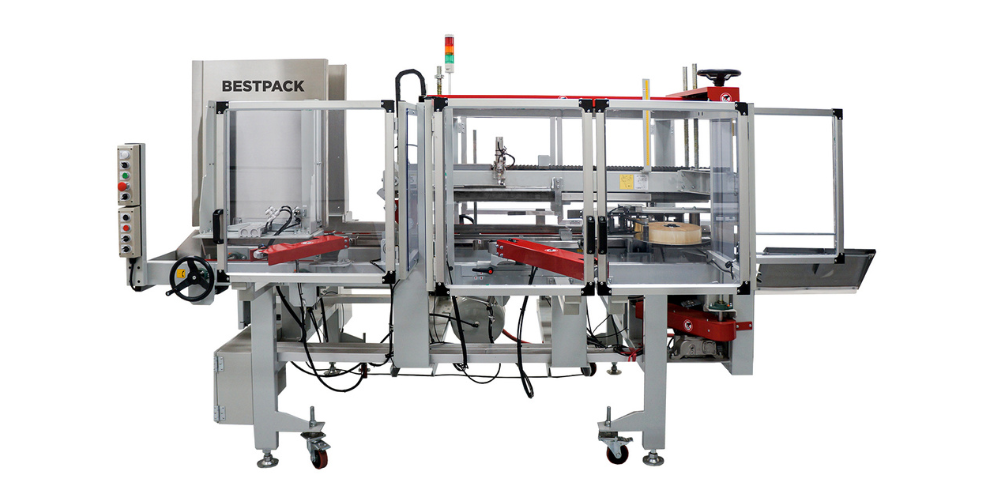What To Check Before You Buy a Case Erector in 2024

Investing in a case erector is a strategic decision that can greatly enhance the efficiency and productivity of your packaging operations. In today’s fast-paced and technology-driven market, selecting the right equipment is more critical than ever. With the advancements in automation and the diverse range of options available, understanding what to look for in a case erector is essential. This comprehensive guide aims to help you navigate the key factors to consider before purchasing a case erector in 2024. By paying close attention to these elements, you can ensure that your investment meets your current operational needs and positions your business for future growth and adaptability.
1. Automation Level
Case erectors come in manual, semi-automatic, and fully automatic models. Your choice depends on the volume of your packaging operations and your budget.
- Manual Case Erectors: Suitable for small operations with low volume.
- Semi-Automatic Case Erectors: Ideal for medium-sized operations where some automation can improve efficiency without a large investment.
- Fully Automatic Case Erectors: Best for high-volume operations, offering the highest efficiency and requiring minimal human intervention.
2. Speed and Throughput
Evaluate the case erector’s speed and throughput capacity, which is typically measured in cases per minute (CPM). Ensure the machine can handle your peak production demands without causing bottlenecks.
- Low-Speed Erectors: 10-15 CPM, suitable for minor operations.
- Medium-Speed Erectors: 20-30 CPM, ideal for mid-sized businesses.
- High-Speed Erectors: 40+ CPM, necessary for large-scale operations.
3. Case Size Versatility
Your case erector should be able to handle the variety of case sizes you use in your operations. Look for machines with adjustable settings for different dimensions and styles, such as RSC (Regular Slotted Container) or HSC (Half Slotted Container) cases.
4. Ease of Integration
Consider how easily the case erector can integrate with your existing packaging line. Compatibility with your current conveyor systems, sealers, and other equipment is crucial for a seamless operation. Check if the manufacturer offers integration support or services.
5. Changeover Time
In operations where different case sizes are frequently used, the changeover time is an essential factor. Machines with quick and easy changeover processes can save valuable production time and reduce downtime.
6. Build Quality and Durability
The construction quality of the case erector affects its longevity and reliability. Look for machines made from durable materials like stainless steel, which can withstand the rigors of a busy production environment and resist corrosion.
7. Maintenance and Support
Regular maintenance is essential to keep your case erector running smoothly. Choose a manufacturer that provides excellent customer support and easy access to spare parts. Some manufacturers offer preventative maintenance programs to help you avoid unexpected downtime.
8. Safety Features
Ensure the case erector is equipped with safety features to protect operators. Look for machines with emergency stop buttons, safety guards, and interlocks. Compliance with safety standards, such as those set by OSHA (Occupational Safety and Health Administration), is also essential.
9. Energy Efficiency
With rising energy costs and a growing focus on sustainability, energy efficiency is crucial. Modern case erectors often have energy-saving features such as low-power standby modes and efficient motors.
10. Cost and Return on Investment (ROI)
While price is an important consideration, it should be weighed against the potential ROI. Calculate the total cost of ownership, including initial purchase price, maintenance, and operating costs. Consider the productivity gains and labor savings the machine will bring to your operation.
11. Reviews and References
Before making a final decision, read reviews and ask for references from other businesses that have purchased the same model. First-hand performance, reliability, and customer service accounts can provide valuable insights.
12. Future-Proofing
Finally, consider your future needs. As your business grows, your packaging requirements may change. Investing in a case erector that can scale with your operations or be upgraded with additional features can save you from making another significant investment shortly.
Conclusion
Choosing the right case erector requires careful consideration of multiple factors, from automation level and speed to maintenance and future scalability. By thoroughly evaluating your needs and the capabilities of the available machines, you can ensure that your investment will yield significant benefits in terms of efficiency, productivity, and cost savings.
In 2024, the landscape of packaging technology continues to evolve, offering more sophisticated and efficient solutions. As businesses strive to stay competitive and meet increasing consumer demands, having the right equipment becomes more critical. The proper case erector can transform your packaging process, reducing manual labor, minimizing errors, and increasing throughput. Additionally, you can contribute to a more sustainable and secure working environment by focusing on energy efficiency and safety features.
As you decide, remember that the goal is not just to meet your immediate needs but to position your business for long-term success. The proper case erector will adapt to your growing requirements, support your operational goals, and deliver a solid return on investment. By following this guide and carefully considering each point, you can confidently select a case erector that will serve your business well into the future, ensuring you stay ahead in the competitive landscape of 2024 and beyond.





